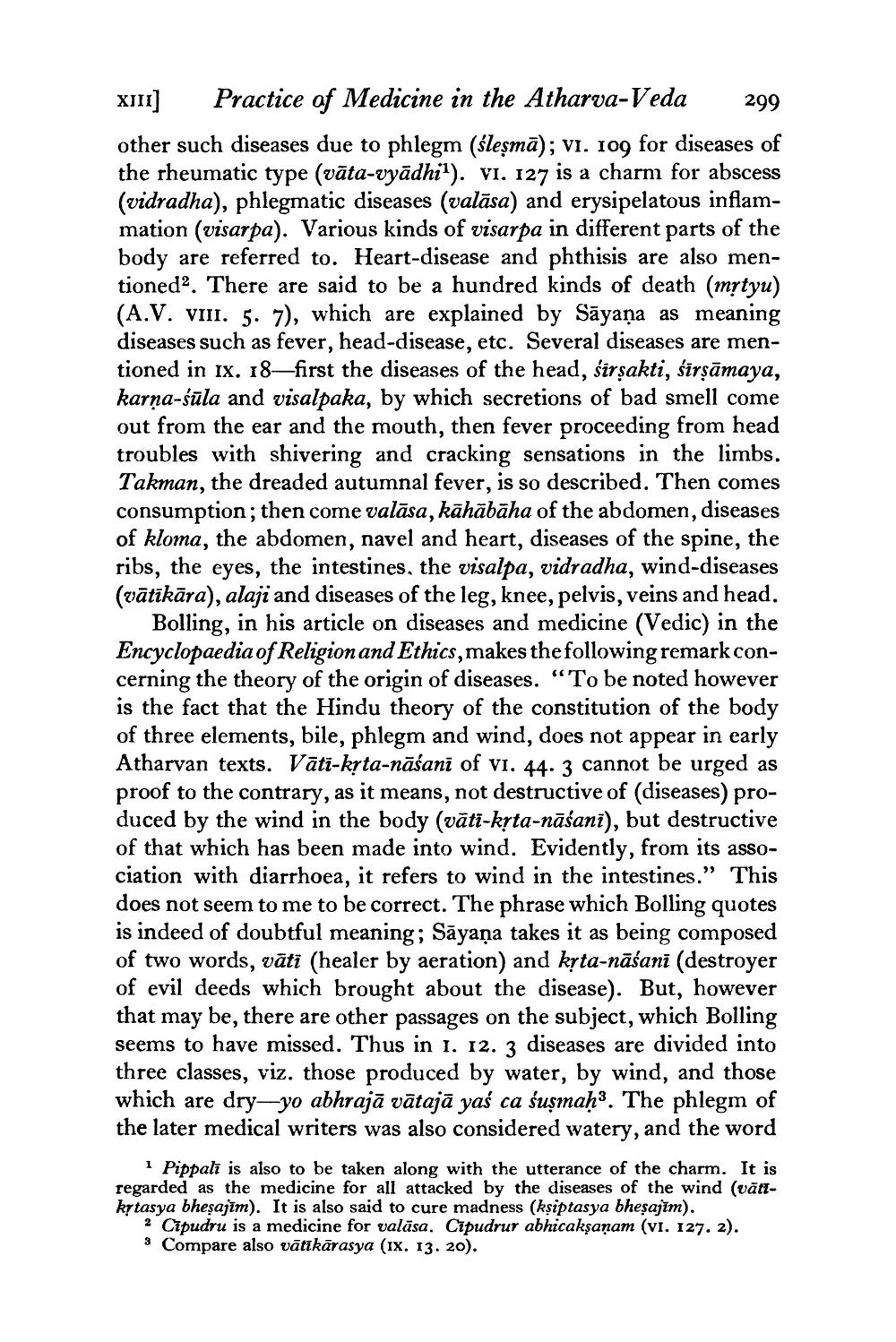________________
Xm] Practice of Medicine in the Atharva-Veda 299 other such diseases due to phlegm (śleşmā); VI. 109 for diseases of the rheumatic type (vāta-vyādhi?). VI. 127 is a charm for abscess (vidradha), phlegmatic diseases (valāsa) and erysipelatous inflammation (visarpa). Various kinds of visarpa in different parts of the body are referred to. Heart-disease and phthisis are also mentioned”. There are said to be a hundred kinds of death (mịtyu) (A.V. viii. 5. 7), which are explained by Sāyaṇa as meaning diseases such as fever, head-disease, etc. Several diseases are mentioned in ix. 18—first the diseases of the head, širşakti, śīrṣāmaya, karņa-śūla and visalpaka, by which secretions of bad smell come out from the ear and the mouth, then fever proceeding from head troubles with shivering and cracking sensations in the limbs. Takman, the dreaded autumnal fever, is so described. Then comes consumption; then come valāsa, kāhābāha of the abdomen, diseases of kloma, the abdomen, navel and heart, diseases of the spine, the ribs, the eyes, the intestines, the visalpa, vidradha, wind-diseases (vātīkāra), alaji and diseases of the leg, knee, pelvis, veins and head.
Bolling, in his article on diseases and medicine (Vedic) in the Encyclopaedia of Religion and Ethics, makes the following remark concerning the theory of the origin of diseases. “To be noted however is the fact that the Hindu theory of the constitution of the body of three elements, bile, phlegm and wind, does not appear in early Atharvan texts. Vātī-kyta-nāšani of vi. 44. 3 cannot be urged as proof to the contrary, as it means, not destructive of (diseases) produced by the wind in the body (vātī-kyta-nāśani), but destructive of that which has been made into wind. Evidently, from its association with diarrhoea, it refers to wind in the intestines." This does not seem to me to be correct. The phrase which Bolling quotes is indeed of doubtful meaning; Sāyaṇa takes it as being composed of two words, vāti (healer by aeration) and kyta-nāšani (destroyer of evil deeds which brought about the disease). But, however that may be, there are other passages on the subject, which Bolling seems to have missed. Thus in 1. 12. 3 diseases are divided into three classes, viz. those produced by water, by wind, and those which are dry—yo abhrajā vātajā yaś ca śuşmaḥ3. The phlegm of the later medical writers was also considered watery, and the word
i Pippali is also to be taken along with the utterance of the charm. It is regarded as the medicine for all attacked by the diseases of the wind (vātikytasya bheşajīm). It is also said to cure madness (kşiptasya bhesajīm).
2 Cipudru is a medicine for valāsa. Cipudrur abhicakşaņam (vi. 127. 2). 3 Compare also vātīkārasya (IX. 13. 20).




